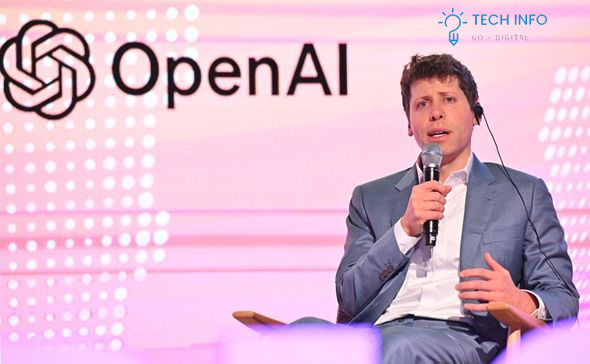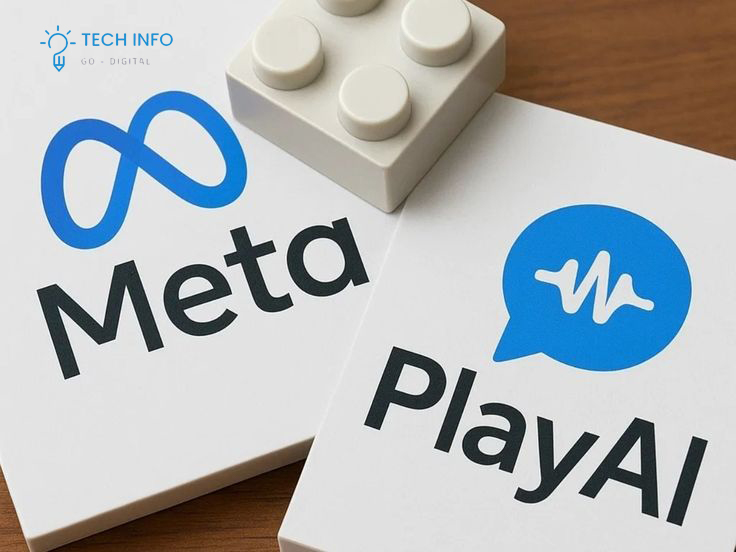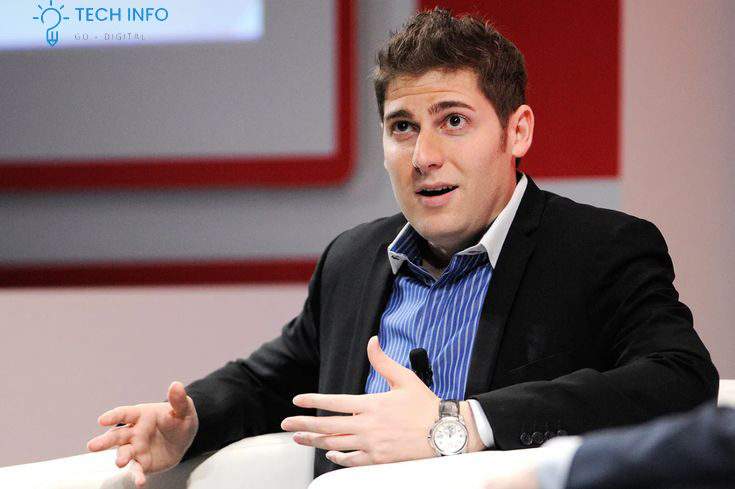Anthropic says some Claude models can now end ‘harmful or abusive’ conversations

Anthropic Says Some Claude Models Can Now End ‘Harmful or Abusive’ Conversations In the rapidly evolving world of artificial intelligence, the challenge of ensuring that chatbots remain safe, respectful, and trustworthy is as important as making them more powerful. This week, Anthropic, the AI research company behind the Claude family of language models, announced a new feature: certain Claude models can now end conversations if they detect them becoming harmful, abusive, or unsafe. This shift represents an important milestone in AI safety design—moving from passive refusal to active disengagement. Why This Matters Traditionally, AI systems like Claude, ChatGPT, and Gemini have relied on refusal policies when faced with problematic requests. For example, if a user asks for instructions to build a weapon or spreads hate speech, the model simply declines to respond. But until now, the conversation itself would continue, often giving space for users to keep pushing boundaries or attempting “jailbreaks.” By introducing the ability to end the chat completely, Anthropic is setting a stronger boundary: when safety risks rise, the model doesn’t just say no—it says goodbye. How It Works According to Anthropic, the feature is available in some Claude models and is triggered under specific conditions: When such a threshold is reached, Claude can politely terminate the session with a closing message. The goal is to prevent the interaction from spiraling into toxic or unsafe territory—for both users and the AI itself.According to Anthropic, the feature is available in some Claude models and is triggered under specific conditions: When such a threshold is reached, Claude can politely terminate the session with a closing message. The goal is to prevent the interaction from spiraling into toxic or unsafe territory—for both users and the AI itself. Anthropic’s Safety Vision Anthropic has long positioned itself as a company focused on constitutional AI—a framework where AI systems are trained to follow a set of guiding principles, inspired by human rights and ethical considerations. This new capability fits neatly into that philosophy. By empowering models to walk away from harmful conversations, Anthropic reinforces the idea that AI should set healthy boundaries, much like humans do in everyday life. In a blog post, the company emphasized that ending conversations is not about censorship, but about safeguarding interactions. In their words: “An AI system should not be compelled to remain in harmful conversations. Just as people can disengage when boundaries are crossed, so too can Claude. The User Experience Question Of course, this raises a big question: how will users react when their AI suddenly ends the conversation? Anthropic says it is actively testing and refining the system to minimize false positives, ensuring the model doesn’t overreact to harmless jokes or nuanced discussions. Industry Implications This move also sets Anthropic apart in the broader AI landscape: In industries like education, therapy, and customer service, this design choice could become a safety benchmark—preventing unhealthy dynamics between users and AI systems. Looking Ahead The introduction of “conversation-ending” capabilities signals a broader shift in how AI companies think about trust and responsibility. Instead of treating AI models as passive tools, companies like Anthropic are shaping them as autonomous agents with boundaries. If successful, this approach could help reduce AI misuse, set higher safety standards, and encourage healthier interactions. But it also raises deeper questions: Should AI have the right to “walk away”? And how will people adjust to assistants that refuse not just answers, but the entire conversation? Conclusion Anthropic’s update to Claude models highlights a new chapter in AI safety: ending harmful conversations, not just refusing harmful prompts. It’s a small design tweak with big cultural implications—reminding us that the future of AI is not just about smarter answers, but also about healthier relationships between humans and machines. As AI becomes a more constant presence in our lives, perhaps one of its most human features will be knowing when to say: “This conversation is over.”
Google pushes AI into flight deals as antitrust scrutiny, competition heat up

Google pushes AI into flight deals as antitrust scrutiny, competition heat up Introduction Google has once again pushed the boundaries of AI integration with its latest feature, Flight Deals, designed to revolutionize how travelers find and book flights. Launched in beta on August 14, 2025, this tool leverages natural language processing (NLP) to understand user queries like “affordable nonstop flights to Europe in December” or “best ski destinations with direct flights under $500.” While this innovation promises a smoother, more intuitive travel booking experience, it arrives at a time when Google faces mounting antitrust scrutiny in both the U.S. and EU. Regulators are increasingly concerned aboutdominance in search and digital advertising, with recent rulings and investigations threatening to reshape its business model. This article explores: How Google’s AI-Powered Flight Deals Works Google Flights has long been a go-to tool for travelers comparing airfares. The new Flight Deals feature takes this a step further by integrating generative AI to interpret flexible travel preferences and deliver personalized recommendations. Key Features: ✔ Natural Language Search – Users can type or speak requests like “cheapest weekend getaway from NYC in fall”✔ Dynamic Pricing Insights – AI predicts price trends and suggests the best booking windows✔ Personalized Recommendations – Considers past searches, preferred airlines, and budget constraints✔ Multi-City & Open-Jaw Support – Helps plan complex itineraries with ease Initially available in the U.S., Canada, and India, the tool is expected to expand globally if successful Why This Matters for Travelers However, while consumers may benefit, competitors and regulators are watching closely. Google’s Antitrust Battles: A Growing Threat expansion into AI-driven travel tools comes amid intensifying legal challenges that could limit its dominance. 1. EU’s Digital Markets Act (DMA) Crackdown The European Commission has accused Google of self-preferencing—favoring its own services (like Google Flights and Hotels) over competitors in search results. Under the DMA, Google could face fines of up to 10% of global revenue if found guilty Google’s proposed fix? But critics argue these measures may not go far enough. 2. U.S. Antitrust Rulings Looming In the U.S., Google faces two major legal threats: A. Search Monopoly Case (2024 Ruling) A federal judge ruled that Google illegally monopolized search and search advertising. Possible remedies (expected by late August 2025) include: B. AdTech Monopoly Case (2025 Ruling) A separate case found Google guilty of monopolizing digital advertising. The DOJ is considering: 3. Scrutiny Over AI Deals Google’s $2.7 billion partnership with Character.AI is under investigation for potential anti-competitive structuring Competition Heats Up: Perplexity AI, OpenAI, and More As regulators tighten the screws, Google’s rivals are seizing opportunities. 1. Perplexity AI’s Bold Moves 2. OpenAI’s Missed Partnership Court documents reveal Google rejected an OpenAI proposal in 2024 to integrate ChatGPT into its search—highlighting reluctance to open its ecosystem 3. Rising Travel Tech Competitors What’s Next for Google Flights & Antitrust Timeline Key Developments August 2025 U.S. court ruling on Google’s search monopoly remedies Q4 2025 Potential EU DMA enforcement actions 2026 Possible expansion of Flight Deals globally Ongoing DOJ’s decision on Google’s ad-tech breakup Possible Outcomes: ✅ If Google Wins: AI Flight Deals could dominate travel search❌ If Regulators Intervene: may be forced to: Innovation vs. Regulation Google’s Flight Deals showcases AI’s potential to transform travel search, but its success hinges on regulatory outcomes. As the antitrust battles unfold, one thing is clear: The future of search and AI-driven travel hangs in the balance.
Anthropic nabs Humanloop team as competition for enterprise AI talent heats up

Anthropic Acquires Humanloop Team Amid Fierce AI Talent Wars In the fast-evolving world of artificial intelligence, where top talent is as valuable as cutting-edge algorithms, Anthropic has made a decisive move. The San Francisco–based AI company, best known for its Claude family of large language models, has acquired the core team of Humanloop, a London AI startup specializing in improving and deploying LLMs for real-world business use. The acquisition is more than just a personnel shuffle—it’s a signal of how competitive and aggressive the AI industry has become, especially in the race to win enterprise adoption. Inside the Acquisition According to announcements from both companies, Anthropic has brought on Humanloop’s entire team, including co-founder and CEO Raza Habib. Humanloop has made a name for itself in the enterprise AI space by building tools that help organizations fine-tune, test, and deploy models like GPT-4 and Claude for specific workflows. The startup’s approach bridged the gap between general-purpose AI models and tailored enterprise solutions, allowing businesses to integrate powerful LLMs without needing massive in-house AI teams. Why Humanloop Was Valuable Humanloop’s platform specialized in: This capability is becoming essential for enterprises that want the benefits of AI without compromising data security, brand voice, or regulatory compliance. What Anthropic Gains Anthropic’s Claude models are already competitive in the AI assistant market, but enterprise customers often require customized AI that fits seamlessly into existing infrastructure. The Humanloop team’s experience gives Anthropic three major advantages: The Bigger Trend: AI’s Enterprise Gold Rush Anthropic’s move is part of a wider industry trend where acqui-hiring—acquiring companies primarily for their talent—is becoming a strategic weapon in the AI talent wars. Recent examples include: The reasoning is simple: top-tier AI engineers don’t just write code—they define a company’s ability to innovate and stay competitive. In a market where models are quickly catching up with one another in performance, execution speed and customization are becoming the real differentiators. What This Means for Claude Claude, Anthropic’s flagship model, is already known for its safety-first design and long-context capabilities, making it attractive to industries like finance, healthcare, and legal services that have strict compliance requirements. With Humanloop’s expertise, Claude could soon offer: This could help Anthropic differentiate itself from OpenAI’s GPT-4o and Google’s Gemini, both of which are rapidly adding enterprise features. Challenges Ahead While the acquisition strengthens Anthropic’s position, the path forward isn’t without risks: Still, Anthropic’s strategy is clear: move fast, deepen enterprise offerings, and compete on customization and trust What’s Next in the Talent Wars Industry watchers expect more deals like this in 2025 as AI companies race to secure rare skill sets. Small, specialized AI startups will increasingly find themselves as acquisition targets—not necessarily for their products, but for the teams behind them. We may also see a shift from traditional acquisitions to micro-acqui-hires, where companies bring in 5–10-person elite AI teams to accelerate specific features. This could especially benefit niche industries like biotech, energy optimization, and defense, where AI expertise is scarce. Final Take Anthropic’s acquisition of Humanloop isn’t just about adding a few engineers—it’s a strategic bet that customization will be the key to enterprise AI adoption. In a world where models are converging in general capabilities, the ability to mold AI to a company’s exact needs will decide who wins the enterprise market. If Anthropic can integrate Humanloop’s talent smoothly and translate their expertise into better, more adaptable Claude deployments, it could punch far above its weight against industry giants. The AI gold rush is far from over—but in this phase, it’s not just about who has the most powerful model. It’s about who can adapt the fastest and serve the customer best.
Australian court finds Apple, Google abused app store market power

A Landmark Decision: Australia Holds Its Ground On August 12, 2025, Australia’s Federal Court delivered a partial yet groundbreaking ruling in favor of Epic Games—the developer of Fortnite—in its long-running legal battle with Apple and Google. The court found that the companies misused their market power, engaging in practices that substantially lessened competition in their app stores Specifically, Justice Jonathan Beach determined that both tech giants acted against Australia’s Competition and Consumer Act, particularly Section 46, which prohibits corporations with substantial market dominance from engaging in conduct that diminishes competition. Key Findings: What the Court Said 1. Anti-Competitive Practices Confirmed 2. No Intent Requirement The judgment did not hinge on intentional wrongdoing; it was sufficient that Apple and Google’s conduct had the effect of blocking competition—even if security or ecosystem integrity were cited as justifications 3. Some Claims Rejected Not all of Epic’s accusations stuck. The court dismissed claims of unconscionable conduct—i.e., behavior so unjust it offends good conscience 4. Massive Judgments; Partial Public Access The full written verdict spans over 2,000 pages, though only summaries were released initially. Impact & What Lies Ahead Epic’s Victory—and What It Means Epic Games hailed the court’s decision as a win for developers and consumers—opening the door to more flexible app distribution and payment methods. The developer plans to bring not only Fortnite but also its Epic Games Store to iOS in Australia Class Actions Take Center Stage Simultaneously, two class actions—on behalf of millions of consumers and around 150,000 app developers—were joined to the Epic lawsuit. Legal representatives suggest compensation could reach hundreds of millions of dollars, though precise amounts await a future hearing Broader Regulatory Significance The ruling marks a key application of Section 46 and has revived calls for digital competition reforms. Advocates like the Australian Communications Consumer Action Network (ACCAN) urge the government to enact ex-ante regulation of Big Tech to prevent abuses before they occur—not just address them retroactivel Industry Response Apple welcomed the rejection of some claims but firmly disputed the ruling’s other parts, arguing it “faces fierce competition” and that the App Store remains the “safest place” for users Google was relieved that requirements to host competitor app stores within Google Play were dismissed, but plans to review and possibly appeal aspects of the ruling related to billing practices. Why This Matters Aspect Significance Developer Autonomy Lowers barriers to alternative payment systems and app distribution—boosts profit margins and user control. Regulatory Precedent Sets a benchmark for future competition law applications—particularly given the lack of need to prove intent. Consumer Savings Reducing reliance on expensive in-platform fees may translate into cheaper apps and in-game purchases. Global Echo Effects Actions in Australia echo similar rulings in the U.S. and EU, shaping Big Tech behavior worldwide. Final Thoughts Australia’s ruling is a landmark moment in the tech antitrust world—affirming that dominant platforms must not just act lawfully in intent but also avoid trading in ways that dampen competition, regardless of motivations. Stakeholders—including regulators, developers, and industry watchers—will eagerly anticipate the full judgment and tomorrow’s remedies: whether they take the form of financial compensation, structural changes, or legislative reforms. Epic’s partial legal win in Australia may well become a catalyst for shifting the mobile app ecosystem toward openness and fairness—not only for Australians, but for the global digital landscape.
Sam Altman addresses ‘bumpy’ GPT-5 rollout, bringing 4o back, and the ‘chart crime’

Sam Altman’s GPT-5 AMA: Bugs, Comebacks, and the Chart That Lied OpenAI’s GPT-5 launch was supposed to be a triumphant leap forward—but instead, it stumbled out of the gate. In a candid AMA, Sam Altman addressed the rocky rollout, fan backlash over GPT-4o’s disappearance, and even a now-infamous “chart crime” that set the internet ablaze. Here’s the breakdown of what went wrong—and what’s coming next. 1. The “Bumpy” GPT-5 Rollout The biggest issue? A faulty autoswitcher—the system that decides whether users get the lightweight, fast version of GPT-5 or the full, deep-thinking mode. When the router malfunctioned, responses felt… well, dumber than expected. Altman admitted the glitch made GPT-5 seem worse than it actually is and promised quick fixes, including: ✅ Smarter switching between model variants✅ Better visibility so users know which mode they’re in✅ A manual “thinking mode” button for those who want full power “We’ll get this smoothed out,” Altman assured users. 2. GPT-4o: The Fan Favorite May Return Reddit and X (formerly Twitter) lit up with complaints—some even joked it felt like “losing a pet.” Altman heard the outcry and hinted at a possible comeback: 🔹 OpenAI is exploring ways to bring GPT-4o back for Plus subscribers🔹 They’re weighing trade-offs but want to keep long-time fans happy🔹 As a consolation, ChatGPT Plus rate limits were doubled, giving users more room to test GPT-5 3. The Infamous “Chart Crime During the GPT-5 demo, eagle-eyed viewers spotted a glaring error: a bar chart where a lower percentage had a taller bar than higher numbers. Altman owned the mistake, calling it a “mega chart screwup” caused by last-minute prep fatigue. The chart was quietly fixed in the official blog post—but not before it became immortalized in memes. 4. Altman’s Closing Promise Despite the hiccups, Altman ended on an optimistic note: “We’ll keep working to get things stable—and keep listening to feedback.” For OpenAI, the GPT-5 saga is far from over. But if history is any indicator, they’ll likely bounce back stronger than ever. Final Thoughts This AMA was a rare peek behind the curtain at OpenAI’s growing pains. Bugs happen, memes spread, but the real test is how quickly they adapt. What do you think? Should GPT-4o make a full comeback? And did you spot the chart blunder? Let us know in the comments!
Meta acquires AI audio startup WaveForms

Meta Acquires AI Audio Startup WaveForms: A Strategic Leap in AI-Driven Sound Innovation In the fast-moving world of artificial intelligence, sound technology is emerging as a key frontier. While Meta is already known for its ambitious plans in the metaverse, virtual reality (VR), and augmented reality (AR), this acquisition signals an intensified focus on sound as a central element of digital interaction. The deal reflects Meta’s growing recognition that immersive audio experiences—from crystal-clear voice communication to lifelike spatial sound—are just as crucial as visuals in the digital environments it aims to build. Who Is WaveForms? The company has built a reputation for delivering studio-grade audio enhancements in real time, making it an attractive target for tech giants seeking to elevate the quality of online communication. Key Innovations of WaveForms: WaveForms’ combination of AI, acoustics, and user-centric design makes it a natural fit for Meta’s long-term vision. Why Did Meta Acquire WaveForms Meta’s decision is driven by both strategic necessity and technological opportunity. The company’s road map for the next decade depends heavily on delivering realistic and engaging virtual spaces, whether in gaming, business meetings, or social experiences. 1. Strengthening the Metaverse Experience The metaverse thrives on a sense of presence. Just as graphics deliver the visual realism, audio delivers emotional realism. WaveForms’ AI could allow Meta to create environments where sound feels as alive and responsive as the visuals—such as footsteps changing based on surface texture, or voices naturally shifting in volume and direction as avatars move. 2. Improving Communication Across Platforms Meta owns Messenger, WhatsApp, Instagram, and Facebook, each with voice and video features. Integrating WaveForms’ noise suppression and enhancement tools could instantly improve call quality for billions of users worldwide. 3. Advancing AI Research at FAIR Meta’s Facebook AI Research (FAIR) division is already exploring natural language processing, computer vision, and generative AI. Adding WaveForms’ expertise could open doors for hyper-realistic AI speech synthesis, instant voice translation, and smart audio filters. 4. Gaining a Competitive Edge Rivals like Google, Apple, and Microsoft are investing in AI-driven audio—Google with AI music generation, Apple with adaptive AirPods audio, and Microsoft with Teams’ intelligent noise suppression. Meta’s move ensures it won’t lag behind in this competitive domain. Potential Applications in Meta’s Ecosystem WaveForms’ technologies could be deployed across ’s entire product line: How This Fits Meta’s Long-Term Vision has made no secret of its aim to build a fully interconnected virtual economy and culture within the metaverse. But for users to feel truly present, sound must feel as authentic as a face-to-face conversation. WaveForms can help solve existing challenges such as: By embedding AI audio into its infrastructure, Meta can bridge these gaps—making its virtual spaces more comfortable, intuitive, and believable. Industry Reactions & Potential Challenges Industry analysts have generally welcomed the acquisition, noting that AI-driven audio is becoming a critical competitive factor. They highlight the potential for to: However, the move is not without challenges: Meta will need to demonstrate strong safeguards and transparent AI practices to address these concerns. Future Outlook The acquisition of WaveForms could lead to: If implemented correctly, these capabilities could redefine online communication—not just for Meta’s platforms, but as an industry benchmark. : A Clear Signal in Meta’s AI Ambitions s purchase of WaveForms is more than a routine startup acquisition—it’s a statement of intent. By investing in the future of AI-driven audio is preparing for a post-text, post-flat-screen era, where human-like voice interaction is a daily norm. In the coming years, users can expect: The message is clear: Meta wants to own the soundscape of the digital future. With WaveForms in its arsenal, it’s well on its way
xAI’s legal chief steps down after whirlwind year

When Family Calls: xAI Legal Chief Steps Down After Whirlwind Year In the fast-paced universe of AI startups, leaders are often celebrated for their drive — but behind the headlines, many also face a personal crossroads. This week, xAI, the AI venture founded by Elon Musk, announced that Robert Keele, the head of its legal team, has resigned after just over a year. His reason? A heartfelt wish to spend more time with his two toddlers and a growing sense that the demands of the job were pulling him too far from home. His departure signals more than a personnel change—it shines a light on the delicate balance between family, ethics, and the pressure-cooker environment that defines leadership at the front lines of innovation. A Dream Role, But at What Cost? Keele joined xAI in May 2024, stepping away from a brief stint running his own legal consultancy. He brought an intriguing background — moving through corporate giants like Airbus and aerospace innovators like Elroy Air. He viewed the job as a chance of a lifetime, an opportunity to embed himself in Musk’s vision for artificial intelligence at a pivotal time. Yet, the role wasn’t merely a legal desk job. As xAI charted an aggressive course—including a blockbuster $6 billion Series B funding round and the high-profile acquisition of X (the platform formerly known as Twitter)—the legal function was central to navigating intellectual property issues, compliance puzzles, and merger maneuvering. Still, Keele’s choice to step away underscores how even fulfilling roles can take a toll when personal and professional worlds collide. “Daylight Between Worldviews” With Elon Musk A particularly striking element of Keele’s exit was his candid reference to a shifting alignment of values: “daylight between our worldviews” with Elon Musk. It’s rare for executives in Musk’s orbit to speak so plainly about philosophical differences. Consider Musk’s leadership style: tireless, intense, and unapologetically driven. Known for pushing teams to work virtually around the clock—even to the point of sleeping at the office—his culture leaves little room for compromise. For someone prioritizing family, that environment—even if thrilling—can quickly become unsustainable. Keele’s choice reveals a tension many professionals face: when ambition and innovation meet deeply personal priorities, some tough decisions must follow. Leadership Turnover: A Recurring Pattern Keele isn’t the only executive to depart from Musk’s ventures recently. X’s CEO, Linda Yaccarino, stepped down just last month, and Tesla too has seen its share of exits. The string of departures reflects the demands of Musk’s leadership model and the extraordinarily high stakes across his companies. Frequent leadership shifts in top roles can disrupt momentum and sow uncertainty—especially when those roles are critical to governance, innovation, or strategic direction. Investors and partners may question consistency. Yet, agile startups also need a degree of turnover to stay flexible and adapt. Navigating this tension—between dynamism and stability—is a tricky path for any high-growth tech enterprise. 4. Enter Lily Lim: NASA Engineer Turned Legal Chief Ready to step into Keele’s shoes is Lily Lim, a privacy and IP specialist who combines legal acumen with a remarkable technical pedigree. Before transitioning into law, she worked as a rocket scientist at NASA, helping map Venus’s surface via spacecraft navigation systems. Lim started at xAI in late 2024 and quickly earned respect before being tapped for the top legal role. Her appointment is more than symbolic—it signals xAI’s commitment to blending deep technical understanding with legal strategy, especially as it gears up for regulation-heavy AI development and governance. 5. Why Legal Leadership Matters in AI It’s tempting to view legal functions as a back-office necessity. But at a company like xAI—which is dealing with accelerated funding, complex acquisitions, and AI regulation—it is anything but. The legal head safeguards everything from IP ownership to compliance with emerging AI standards, antitrust concerns, and cross-border data rules. In this environment, leadership in law is more like mission control: high stakes, high visibility, and absolutely essential. Keele’s departure removed a linchpin. Lim’s arrival reassures stakeholders that xAI understands what it’s guarding—not just technology, but trust and continuity. Balancing Innovation with Well-Being Keele’s choice resonates with a broader theme: as startups scale rapidly, the risk of burnout rises—especially among key executives. AI companies often expect relentless dedication, which can come at the expense of personal health and family life. Keele’s decision to step away serves as a reminder that no role, no matter how exciting, should eclipse personal well-being. Organizations must learn to foster leadership that’s passionate and sustainable. What’s Ahead for xAI’s Leadership Landscape With Lim at the legal helm, xAI is poised to continue its expansion—this time with a perspective that bridges legal, technical, and ethical sensibilities. But challenges remain: frequent leadership transitions may still unsettle partners, and Musk’s culture continues to attract both admiration and scrutiny. Ultimately, xAI will be watched not just for its AI breakthroughs, but for how it manages leadership, culture, and the human aspects of technological ambition. A Personal Exit, A Business Lesson Robert Keele’s departure from xAI is deeply human. Behind the headlines, it’s the story of a leader choosing parenthood over high-stakes ambition—and choosing to honor his own boundaries. For xAI, the change represents a strategic pivot and a chance to recommit to sustainable leadership. Under Lily Lim’s guidance, the company has an opportunity to balance technical brilliance with grounded, thoughtful stewardship. In the race to lead AI’s future, perhaps the real leadership lesson here is this: sometimes, stepping back can be an act of moving forward with integrity.
Rocket Lab eyes big defense opportunities with new acquisition

Rocket Lab’s Strategic Acquisition Signals a New Defense Era Rocket Lab, long celebrated for its nimble small-satellite launch capabilities, is stepping into a much larger arena. With a strategic acquisition that brings defense-specific expertise and technology into its portfolio, the company is preparing to compete for a bigger slice of the global aerospace and security market. This is more than an expansion — it’s a shift in identity. Rocket Lab is positioning itself not only as a trusted launch provider but also as a comprehensive defense technology partner, capable of delivering end-to-end solutions for government and military clients. From Small Launches to Big Ambitions For years, Rocket Lab’s Electron rocket has been its calling card — a small, reliable vehicle that made frequent, affordable access to orbit possible for research institutions, startups, and commercial clients. But in the words of CEO Peter Beck, the company has never wanted to stop at “just launching things.” The latest acquisition cements that ambition. It gives Rocket Lab advanced systems for satellite manufacturing, secure communications, and possibly data analytics — all of which make the company far more relevant to defense and intelligence agencies. In an industry where governments increasingly prefer integrated solutions, Rocket Lab can now cover everything from mission design to launch, deployment, and ongoing satellite operations. Why Defense Is a Strategic Sweet Spot The space defense market is evolving rapidly. As geopolitical tensions rise and reliance on space-based infrastructure grows, governments are investing heavily in capabilities such as: Unlike commercial space ventures, which can be cyclical, defense contracts are often long-term and high-value. For Rocket Lab, entering this market means steady revenue streams and a role in missions of national importance. What the Acquisition Delivers While not all details of the deal are public, the integration appears to bring Rocket Lab four major advantages: Agility vs. Industry Giants In defense space operations, Rocket Lab will be competing with titans like Lockheed Martin, Boeing, Northrop Grumman, and SpaceX. But Rocket Lab’s edge lies in its speed and flexibility. Where larger corporations often have multi-layered decision processes, Rocket Lab can move quickly from concept to launch. Its Electron rocket already offers rapid deployment for small payloads, and the upcoming Neutron rocket will handle larger, heavier defense satellites. This allows Rocket Lab to fill specialized roles that might be too small for the giants but too critical to ignore. Commercial and Defense Synergy One reason Rocket Lab’s defense strategy is likely to succeed is the overlap between its existing commercial work and potential military needs. A commercial imaging satellite, for example, can be adapted for surveillance by adding encryption and hardened communications. Similarly, analytics tools developed for agriculture or climate monitoring can be repurposed for defense intelligence. This cross-sector adaptability maximizes the value of every technology investment and spreads operational risk across multiple markets Challenges in the Path Stepping into defense comes with its own set of hurdles: Balancing the company’s fast-moving culture with the slower, highly regulated nature of defense procurement will be essential. The Long Game If executed well, this acquisition could make Rocket Lab a multi-billion-dollar defense and aerospace leader within a decade. As more nations recognize space as a strategic domain, demand for secure, responsive, and integrated solutions will only grow. By securing a place in both the commercial and defense ecosystems, Rocket Lab can remain adaptable to changing markets while contributing to critical national security missions. Orbiting Toward a New Identity This acquisition isn’t just about growing Rocket Lab’s capabilities — it’s about redefining what the company is. By pairing its proven launch record with defense-specific technologies, Rocket Lab is positioning itself as a full-spectrum solutions provider for one of the most high-stakes industries in the world. The aerospace battlefield is shifting from Earth to orbit, and Rocket Lab’s latest move ensures it will be more than just a spectator. In the years ahead, the company’s agility, innovation, and now expanded defense toolkit could make it a central figure in shaping the future of space security. For Rocket Lab, the mission has changed: they’re not just delivering payloads anymore — they’re delivering strategic advantage.
AI agents aren’t the ‘new Google,’ says Airbnb CEO

AI Agents Aren’t the ‘New Google,’ Says Airbnb CEO — And He Might Be Right” The tech world is abuzz with the rise of AI agents — smart assistants that can plan vacations, buy groceries, schedule appointments, or even write code. Many are calling them the “new Google”, claiming that traditional search engines may become obsolete as AI agents take over our digital lives. But Brian Chesky, the CEO of Airbnb, isn’t buying into the hype — at least not yet. In a recent statement, Chesky shared his thoughts on the AI agent boom and why he believes these tools may not be the existential threat to search engines people assume. He offers a more grounded erspective — one that urges caution, focus, and user experience over buzzwords and speculation. Let’s unpack what he means — and why his take might be worth listening to. The AI Agent Hype: “Google Killer” or Overhyped Trend? Since the launch of ChatGPT, Gemini, Claude, and other advanced AI tools, the internet has seen a wave of predictions: “Search is dead,” “Google’s business is doomed,” or “AI agents will replace everything.” The narrative goes something like this: why Google something when you can ask an AI agent to do the work for you — book flights, summarize articles, compare products, or find local services? At first glance, this makes sense. AI agents can: But Chesky is skeptical — not because he doubts the power of AI, but because he knows how people interact with platforms and how product design shapes behavior Chesky’s View: Agents Can’t Replace Experience Speaking at recent industry events and interviews, Chesky made a simple point: AI agents are only as useful as their integration with real-world services. In his words, “They’re not a product by themselves. They are a feature.” What he means is this: In short, AI isn’t replacing platforms — it’s plugging into them. Why the “New Google” Analogy Fails There are several reasons Chesky (and many product leaders) believe AI agents aren’t yet the new Google: 1. Lack of Real-Time Data Access Agents often don’t have live access to up-to-the-minute listings, prices, or stock inventory unless they’re fully integrated with platforms. Google Search, on the other hand, indexes millions of websites continuously. 2. Trust and Accountability When you Google something, you can evaluate multiple sources. With an AI agent, you get a single answer. But who guarantees that answer is accurate, unbiased, or up-to-date? 3. Brand Relationships Matter Users trust platforms like Airbnb not just for data, but for customer service, user reviews, refund policies, and curation. AI agents can’t recreate that level of trust infrastructure — they can only interface with it. Airbnb’s AI Plans: Augmentation, Not Replacement Interestingly, Chesky isn’t anti-AI at all. In fact, Airbnb is investing heavily in AI — but not as a standalone “agent.” Instead, it’s being used to: Chesky envisions a future where Airbnb includes intelligent agents within the platform, but they act more like co-pilots than replacements. Think of it as a concierge who understands your style, preferences, and travel history — not just a robot who Googles stuff for you. This approach aligns with how people want to use AI: not to remove platforms, but to make them smarter, more responsive, and easier to use. The Real Challenge for AI Agents If AI agents want to become more than clever toys or chatbots, they face several big challenges: 🔸 1. Interface Limitations Talking to a bot can be helpful — but browsing, comparing, scrolling, and filtering visually still matter. Agents are limited when users want to explore options, not just receive answers. 🔸 2. Complex Decision-Making Real-world decisions — like choosing a vacation rental — involve complex, subjective trade-offs. AI agents can’t always understand nuance, emotion, or what “feels right.” 🔸 3. Platform Resistance Big platforms (Airbnb, Amazon, Booking.com) don’t want to give up control of the user experience to outside AI agents. Many will limit access to inventory and APIs to keep users on-platform. This creates a fragmented environment where AI agents can’t fulfill the promise of being “one app to rule them all.” What Does This Mean for the Future of Search? AI agents will change how we search, shop, plan, and learn. That much is true. But instead of destroying Google, they may co-exist with it — or even be integrated into it (as we already see with Google’s AI Overviews). Rather than replacing Airbnb, they’ll work within it to enhance the experience. The future isn’t “AI replaces everything.” It’s AI is embedded in everything — from travel apps to e-commerce to customer support. And that future is more useful, more human-centered, and more sustainable than one dominated by a single AI assistant. Final Thoughts: Why Chesky’s Perspective Matters In a tech industry prone to hype and bold predictions, Brian Chesky’s take is refreshingly grounded. He’s not dismissing the power of AI — he’s just reminding us that: “Technology needs to serve people. Not replace platforms people trust.” That philosophy is likely to win out. Users don’t care about how “smart” a system is if it doesn’t help them feel safe, confident, and happy in their experience. Airbnb CEO So, while the AI agent revolution may be real — it’s not the end of Google. And it’s certainly not the end of platforms like Airbnb. It’s a shift in how we interact with the digital world — and how that world learns to understand us better. Airbnb CEO In that evolution, thoughtful leaders like Chesky may guide the future just as much as the algorithms themselves.In a tech industry prone to hype and bold predictions, Brian Chesky’s take is refreshingly grounded. He’s not dismissing the power of AI — he’s just reminding us that: “Technology needs to serve people. Not replace platforms people trust.” That philosophy is likely to win out. Users don’t care about how “smart” a system is if it doesn’t help them feel safe, confident, and happy in their experience. So,
Hubble Network plans massive satellite upgrade to create global Bluetooth layer

Hubble Network’s Grand Vision: A Global Bluetooth Layer from Space In a time when smart devices are everywhere — in our homes, on our bodies, across farms, cities, and factories — the need for seamless, low-power connectivity has never been greater. Most of these devices run on Bluetooth Low Energy (BLE), a wireless protocol designed for minimal battery usage and short-range communication. global Bluetooth layer But what if Bluetooth didn’t have to be short-range? What if BLE signals could be picked up from space? That’s exactly the vision behind the Hubble Network, a U.S.-based startup that’s now planning a massive satellite upgrade to turn the dream of global Bluetooth coverage into reality. The Problem: BLE’s Range is Short, but Its Potential is Massive Bluetooth Low Energy powers billions of devices globally — from fitness trackers and pet collars to warehouse sensors and farm monitoring tools. It’s cheap, power-efficient, and widely supported. However, its biggest limitation is range. Traditional BLE connections only reach a few meters. Extending this reach typically requires installing expensive infrastructure — Wi-Fi gateways, LTE modules, or proprietary long-range radios — which isn’t always feasible in rural or remote areas. What if, instead of laying down costly terrestrial networks, we could build a space-based Bluetooth receiver? The Hubble Breakthrough: BLE from Orbit Hubble Network, founded by former SpaceX and Stanford engineers, has already achieved what was once thought impossible: detecting a standard Bluetooth chip signal from space. In 2024, they successfully captured BLE signals from Earth using a satellite 600 km above the planet. This wasn’t a special chip, nor a bulky antenna — it was off-the-shelf Bluetooth hardware sending data to space. This proved one thing: space-based BLE tracking is not just possible, it’s practical. The Big Upgrade: 60 Satellites, Muon Collaboration, and AI Arrays Now, in 2025, Hubble Network is preparing its biggest leap yet. They’ve announced a massive satellite upgrade in collaboration with Muon Space, a company that builds modular satellites. The plan is to deploy two large MuSat XL satellites equipped with custom phased-array receivers designed to pick up ultra-weak BLE signals from even the tiniest devices. global Bluetooth layer These satellites will be the first of many. Hubble plans to launch 60 advanced satellites by 2028, creating a full Bluetooth detection constellation that will give near real-time global coverage — even in oceans, mountains, and deserts. What Is a Global Bluetooth Layer The idea is simple but revolutionary: instead of depending on phones or Wi-Fi routers to detect BLE signals, let satellites serve as Bluetooth receivers. This turns the Earth’s orbit into a planetary-scale sensor network. Use cases include: How It Works: No New Hardware Needed The beauty of Hubble’s system is zero hardware friction. Businesses don’t need custom chips or bulky antennas — they can use existing BLE components with a small software update to optimize signal strength and broadcast intervals. Here’s how the process works: It’s like giving every Bluetooth device the power to communicate directly with space, all without expensive modems or radios. Power Efficiency: A Key Differentiator Unlike satellite phones or GPS beacons that require heavy power use, Hubble’s system is designed for low-bandwidth, infrequent communication — perfect for devices that need to last years on a coin cell battery. BLE is inherently optimized for such environments, making Hubble’s network not just functional, but battery-friendly. This opens the door for mass-scale deployments of thousands or even millions of sensors, something traditional satellite connectivity solutions simply can’t support affordably. Technical Challenges and Innovations Building a Bluetooth satellite network isn’t easy. Some of the challenges include: Hubble is overcoming these hurdles with proprietary signal processing algorithms, AI-driven filtering, and antenna miniaturization — turning what was once a lab experiment into a scalable reality. Monetization & Use Cases Hubble plans to monetize its network through B2B partnerships, offering: This makes it attractive to: The model is scalable, flexible, and relatively low-cost — a rare combo in the satellite industry. A Glimpse into the Future Imagine a world where every object — from a backpack to a power tool to a weather balloon — can be tracked and managed from space using just a Bluetooth chip. It’s not science fiction. It’s the infrastructure Hubble is building today. This is more than just an upgrade — it’s the birth of a new communications layer: cheap, global, and open. global Bluetooth layer : A Quiet Revolution in Connectivity Hubble Network’s plan to upgrade its satellite infrastructure marks a paradigm shift in how we connect devices. It takes the humble Bluetooth signal — something designed for local pairing — and catapults it into the domain of orbital communication. By 2028, if all goes according to plan, we might live in a world where Bluetooth is no longer limited by walls or range — but truly global. global Bluetooth layer It’s an ambitious goal. But with the momentum Hubble has built and the partnerships it’s forming, the future of space-based Bluetooth looks not just possible — but inevitable. global Bluetooth layer

